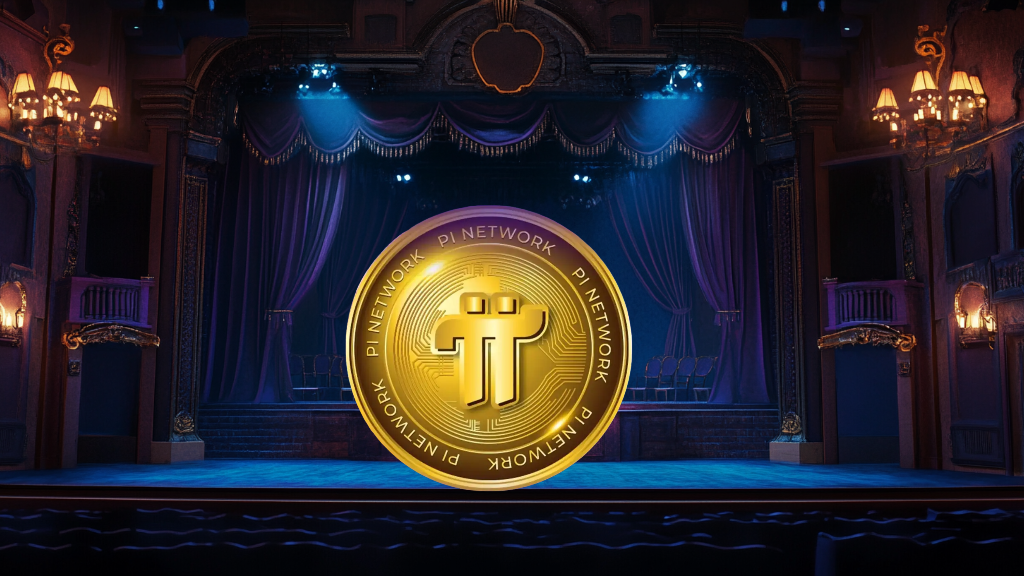Pi Network is pioneering a mobile-native approach to cryptocurrency mining, offering an accessible alternative to energy-intensiv...
Understanding Pi Coin: A Comprehensive Guide to Pi Network’s Mobile Cryptocurrency
| Updatedby Tony Frank · 7 mins read

Pi Network is pioneering a mobile-native approach to cryptocurrency mining, offering an accessible alternative to energy-intensive blockchains. This in-depth guide covers Pi Coin’s architecture, ecosystem roles, transition to open mainnet, market potential, and the challenges it must overcome to gain real-world traction.
As the blockchain industry evolves, new projects are emerging to make digital currency more accessible and inclusive. One such initiative is Pi Network, a mobile-first cryptocurrency platform that reimagines crypto mining for the smartphone era. Founded by Stanford graduates, the project aims to eliminate technical and financial barriers that have traditionally limited participation in the crypto economy.
In this guide, we explore Pi Coin’s foundations, the structure of its ecosystem, the mining model, ongoing development milestones, and its challenges — as well as its future prospects in a rapidly changing digital landscape.
What are pi coin and pi network?
Pi Network is a decentralized blockchain project that allows users to mine Pi Coin directly from their smartphones, removing the need for energy-intensive hardware. This mobile-first approach significantly lowers the barrier to entry and makes cryptocurrency more accessible to a broader audience.
The network’s mission is to democratize digital currency by enabling anyone to participate, regardless of technical background or financial resources. It emphasizes community-driven trust and inclusive participation as core design principles.

Photo: Pi Coin Official Website.
Founded by Stanford Ph. D.s Dr. Nicolas Kokkalis and Dr. Chengdiao Fan, Pi Network blends academic research with real-world usability. Their vision is to create a user-friendly ecosystem where individuals can mine, use, and build applications — all centered around mobile access and community engagement.
The pi ecosystem
The Pi ecosystem is a unified platform where users can mine, interact, and build on a blockchain-powered network. At its core is the Pi Network app, which enables daily mobile mining with a single tap, making crypto participation simple and accessible for users known as Pioneers.
Complementing the app is the Pi Browser — a portal to decentralized apps, payment tools, and identity features. It offers seamless access to Pi-based services and integrates wallet and login functionality for a smooth user experience.
To support innovation, Pi Network provides a developer platform that allows third-party creators to build applications using Pi as a native currency. These apps are accessible through the Pi Browser, bypassing traditional app store limitations.
Four key roles support the ecosystem:
- Pioneers mine and validate the network;
- Contributors form trusted security circles;
- Ambassadors drive adoption through referrals;
- Node Operators run desktop software to maintain blockchain infrastructure.
This multi-layered participation model reinforces Pi’s decentralization, security, and long-term growth — all led by its user community.
Mining mechanism
Pi Network introduces a mobile-first mining model that lets users mine Pi Coins from their smartphones — without heavy battery use, storage strain, or data consumption. Unlike Bitcoin’s energy-intensive Proof-of-Work, Pi relies on a more sustainable approach built for everyday accessibility.
The network uses the Stellar Consensus Protocol (SCP), which validates transactions through trust-based security circles rather than brute computational power. This system boosts efficiency and scalability while avoiding the centralization seen in traditional mining.
Pi implements a KYC process to protect the network’s integrity. It requires users to verify their identity through government ID and biometric checks. KYC helps prevent fraud, ensures regulatory compliance, and is mandatory for transferring Pi to the open mainnet.
By combining lightweight mining with strong verification, Pi Network creates an inclusive, secure entry point into the crypto space — without the traditional technical or financial barriers.
Transition to open mainnet
Pi Network has progressed through a phased roadmap to build a stable and scalable blockchain. It began with the 2019 beta phase, focused on mobile mining, onboarding, and community growth. This was followed by the Enclosed Mainnet, where users could mine and use dApps, but wallet balances remained locked.
This transitional phase emphasized KYC verification, node setup, and ecosystem testing — laying the groundwork for the next step: the Open Mainnet. Once live, verified users can transfer Pi externally, trade on exchanges, and use the coin in real-world scenarios, such as peer-to-peer payments and DeFi platforms.
The shift to open mainnet marks a turning point, introducing real utility and market-driven value to Pi Coin. As interoperability with the broader crypto space increases, so could adoption, development, and the coin’s perceived worth — positioning Pi Network as a serious contender in mobile-first blockchain innovation.
Pi coin’s position in the cryptocurrency market
Unlike Bitcoin and Ethereum, which require costly hardware or capital to participate, Pi Coin offers a mobile-first alternative. Users mine from their smartphones without significant resource consumption. This model lowers the barrier to entry and broadens access to crypto participation.
Pi Network uses the Stellar Consensus Protocol (SCP) and trust-based security circles instead of energy-heavy computations, making it more scalable, eco-friendly, and community-focused.

Pi Coin Price Chart. Photo: TradingView.
Pi Coin remains in a pre-exchange stage, and its market value is mainly speculative. Some platforms offer IOU tokens as unofficial representations of Pi’s potential price, though these are volatile and not tied to actual supply or utility.
Without verified circulation or open-market pricing, Pi lacks a formal market cap. However, the upcoming open mainnet launch and possible exchange listings are increasing demand. The coin’s future will depend on successful KYC adoption, app ecosystem growth, and merchant integration.
Pi positions itself not as a competitor to legacy blockchains but as an inclusive, mobile-native currency aiming to turn its global user base into real economic activity.
Challenges and criticisms
While the Pi Network has attracted a large user base through its novel approach to cryptocurrency mining, it has also faced notable skepticism. Some view its method — allowing users to mine Pi through daily check-ins — as lacking the technical robustness seen in established cryptocurrencies. Critics question whether this simplified system can sustain long-term security or facilitate real growth once the incentives shift.
Delays in transitioning to the open mainnet have added to concerns, with critics highlighting the absence of exchange listings and a precise market valuation. The platform’s real-time progress is closely watched, and without official market integration or strong adoption by businesses, doubts remain about Pi Coin’s status as a serious asset.
There are also questions surrounding Pi’s broader utility beyond its immediate community. While decentralized applications are emerging in the Pi Browser, many argue that without external adoption, the ecosystem’s social potential remains largely unrealized. Critics point to the lack of clear tools to engage businesses or support real-world commerce as a sign of a potential decline in momentum.
To address these issues, Pi Network has officially strengthened its compliance efforts by introducing a KYC system based on biometric verification and ID checks. Alongside robust encryption protocols, these steps play a crucial role in protecting user data and maintaining the integrity of cryptocurrency mining operations. The network also logs activity and system performance to track real-time ecosystem evolution.
Ultimately, Pi Network’s ability to navigate these challenges and build trust through transparency, regulation, and meaningful community building will determine whether it can transition from a speculative medium to a utility-driven platform.
Future prospects of pi coin
As the open mainnet launch approaches, Pi Coin is gaining attention for its potential role in the broader digital economy. One major opportunity is integration with mainstream finance, including partnerships with fintech platforms, payment providers, and online merchants. Pi could serve as a practical payment layer with millions of verified users, especially in regions lacking access to traditional banking.
Beyond payments, dApps within the Pi ecosystem are expected to expand utility — from commerce to identity services. The Pi Browser enables seamless access to these apps without external downloads or custodial wallets.
Pi Network plans to improve scalability, grow its developer ecosystem, and increase user engagement through new use cases — including earning, spending, and governance participation. Merchant tools are also in development to support real-world adoption and microtransactions.
The project’s success will depend on execution, regulatory clarity, and ecosystem maturity. But with its mobile-native design and focus on accessibility, Pi Network aims to become a foundational player in the next wave of blockchain adoption.
Disclaimer: This article is for informational purposes only and does not provide financial, trading, or investment advice. Cryptocurrency prices can fluctuate wildly, so always do your own research (DYOR), assess risks, and consult a professional before making financial decisions. The author and team are not responsible for any losses from using this information.
FAQ
What is Pi Coin, and how does it differ from other cryptocurrencies?
Pi Coin is a mobile-first cryptocurrency that allows users to mine coins on their smartphones without energy-intensive hardware, unlike Bitcoin or Ethereum.
How can I start mining Pi Coin on my mobile device?
Download the Pi Network app, register an account, and start mining with a daily tap — no special equipment or technical knowledge is required.
Is Pi Network's mining process safe for my smartphone?
Yes, the mining process runs off-chain and doesn’t consume significant battery, data, or device resources, making it safe for everyday mobile use.
How does the KYC process work within Pi Network?
Users verify their identity by submitting a government-issued ID and biometric data through the app to ensure compliance and prevent fraud.
When is Pi Network expected to transition to an open mainnet?
While no official date has been confirmed, the transition is anticipated soon as KYC, node deployment, and ecosystem readiness near completion.
What roles can users play in the Pi Network ecosystem?
Users can be Pioneers (miners), Contributors (security circle builders), Ambassadors (referrers), or Node Operators (validators on desktops).
How does Pi Network ensure the security and privacy of its users?
It uses encryption protocols, secure KYC procedures, and decentralized trust mechanisms to protect user data and maintain network integrity.
What are the potential risks and criticisms associated with Pi Network?
Concerns include its delayed open mainnet launch, uncertain coin value, and limited real-world utility, though the team is addressing these through cautious development and security measures.
In this article, you’ll get a comprehensive look at what XRP is, why it’s gaining renewed attention, and whether it deserves a pla...
We’ve found eight decentralized wallets that stand above the rest. Keep reading to find the best decentralized crypto wallet to us...